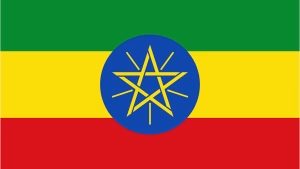Artificial Intelligence
Artificial Intelligence
Our work with Artificial Intelligence
Developed public healthcare systems such as the National Health Service (NHS) in the United Kingdom now routinely use AI in clinical practice. It is therefore broadly accepted that the responsible and ethical use of AI may significantly improve health outcomes.
But the potential for AI to improve health outcomes is actually far greater in developing countries because baseline health indicators remain unacceptably low. Despite this, the capacity of AI healthcare systems to improve health outcomes is usually only considered and studied within developed healthcare systems.
Our organisation accordingly reviews emerging AI systems and considers how they can be adapted to responsibly and ethically improve healthcare outcomes in developing countries. In that respect, we suggest that the effective use of AI in developing countries will require its combination with targeted digital health resources to augment preventive public health programmes.
We have therefore begun designing free targeted digital medical resources to be used in combination with emerging AI systems. Here are some examples together with a summary of our analysis.
Artificial Intelligence case studies
Diabetic eye disease digital medical resources to complement emerging AI systems that predict diabetic retinopathy using fundus photography. A summary of our analysis of these systems is available and we have made the corresponding digital medical resource in 6 languages.
Diabetes guidance digital medical resources to complement emerging AI systems that predict Type 2 diabetes mellitus based on ECGs. A summary of our analysis of these systems is available and we have made the complementary digital medical resource in 17 languages.
Gestational diabetes digital medical resources to complement emerging AI systems that predict that condition from biochemical and clinical parameters. A summary of our analysis of these systems is available and we have made the associated digital medical resource in 16 languages.
Blood pressure digital medical resources to support emerging AI systems that predict heart disease from radiological scans. A summary of our analysis of these systems is available we have made the corresponding digital medical resource in 16 languages.
Diabetic eye disease digital medical resources to complement emerging AI systems that predict diabetic retinopathy using fundus photography. A summary of our analysis of these systems is available and we have made the corresponding digital medical resource in 6 languages.
Diabetes guidance digital medical resources to complement emerging AI systems that predict Type 2 diabetes mellitus based on ECGs. A summary of our analysis of these systems is available and we have made the complementary digital medical resource in 17 languages.
Gestational diabetes digital medical resources to complement emerging AI systems that predict that condition from biochemical and clinical parameters. A summary of our analysis of these systems is available and we have made the associated digital medical resource in 16 languages.
Blood pressure digital medical resources to support emerging AI systems that predict heart disease from radiological scans. A summary of our analysis of these systems is available we have made the corresponding digital medical resource in 16 languages.
Adapting emerging AI systems to improve healthcare in developing countries
We will increase our free library of digital medical resources in multiple languages as more AI technologies emerge and as our organisation grows.
Our work with
Artificial Intelligence
The adoption of AI by public healthcare systems such as the National Health Service (UK) shows that its responsible and ethical use may significantly improve healthcare outcomes. Our organisation is therefore working to adapt emerging AI systems to the healthcare circumstances of developing countries.
After surveying the literature on specific emerging AI systems, we believe that their effective use in developing countries requires corresponding digital medical resources. In the following case studies, we present a summary of our analysis of specific AI systems and the corresponding digital medical resource.
Artificial Intelligence
case studies
AI systems that diagnose
diabetic retinopathy
Our summary of these emerging diagnostic AI systems explains how they may be complemented by digital medical resources in developing country contexts. We have made this resource freely available in 6 languages.
AI systems that diagnose
diabetes mellitus
Our summary of these emerging predictive AI systems explains how they may be complemented by digital medical resources in developing countries. We have made this resource freely available in 16 languages.
AI systems that predict
gestational diabetes
Our summary of these emerging diagnostic AI systems explains how they may be complemented by digital medical resources in developing countries. We have made this resource freely available in 16 languages.
AI systems that predict
coronary artery disease
Our summary of these emerging diagnostic AI systems explains how they may be complemented by digital medical resources in developing countries. We have made this resource freely available in 16 languages.
Adapting AI healthcare systems to developing countries
We will increase our free library of digital medical resources as more AI technologies emerge and as our organisation grows.

























